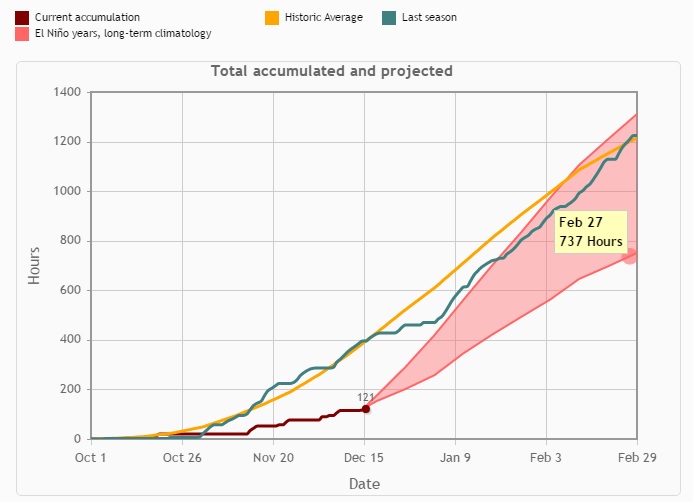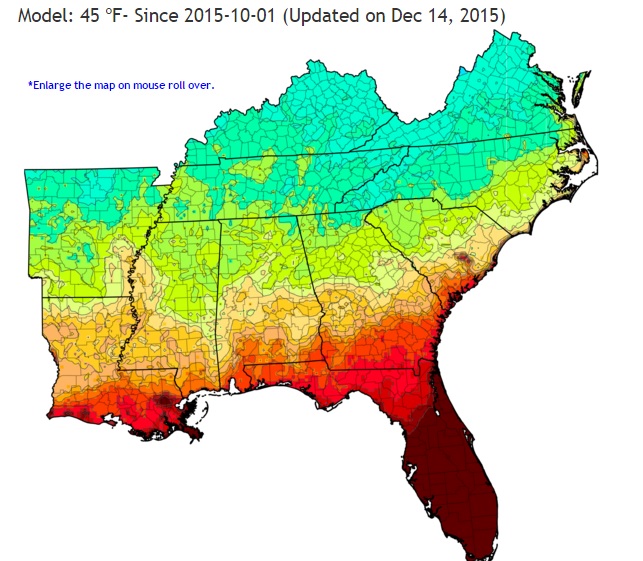The unusually warm fall has had quite a few agricultural impacts. The Packer noted today that Florida strawberry volumes have really been set back by the warmth (link). The season started early, but the heat is stressing the plants, which causes a reduction in the number of berries set.
I’ve also had some calls from peach growers concerned about the lack of chill hours so far this winter. At Fort Valley State University in Peach County, Georgia, they’ve only received 135 chill hours this year compared to 433 last year. The records for the Georgia Automated Environmental Monitoring Network athttps://www.georgiaweather.net are only available online back to 2003, but this is by far the lowest number of chill hours in the period from 2003 to 2015. The previous low was 200 hours in 2007.
Should growers be worried? There is still a lot of winter to go, and while it does not look like it will cool off much in the rest of December, most predictions for January and February indicate that we could see cooler than normal temperatures later in the winter. That would help the chill hours accumulate.
You can test the range of likely chill hours using a calculator at https://agroclimate.org/tools/Chill-Hours-Calculator/. The graph below shows the actual accumulation in red to date, last year in blue, the average in gold, and the range of chill hours expected based on previous El Niño winters. For a period from October 1 to February 29, the lowest value expected is 737 chill hours, while the highest is just above the long-term average at 1299 hours for this second station in Peach County.

You can also monitor chill hours across the Southeast at https://agroclimate.org/tools/Chill-Monitoring/.

Information obtained from https://site.extension.uga.edu/climate/ and written by Pam Knox pknox@uga.edu